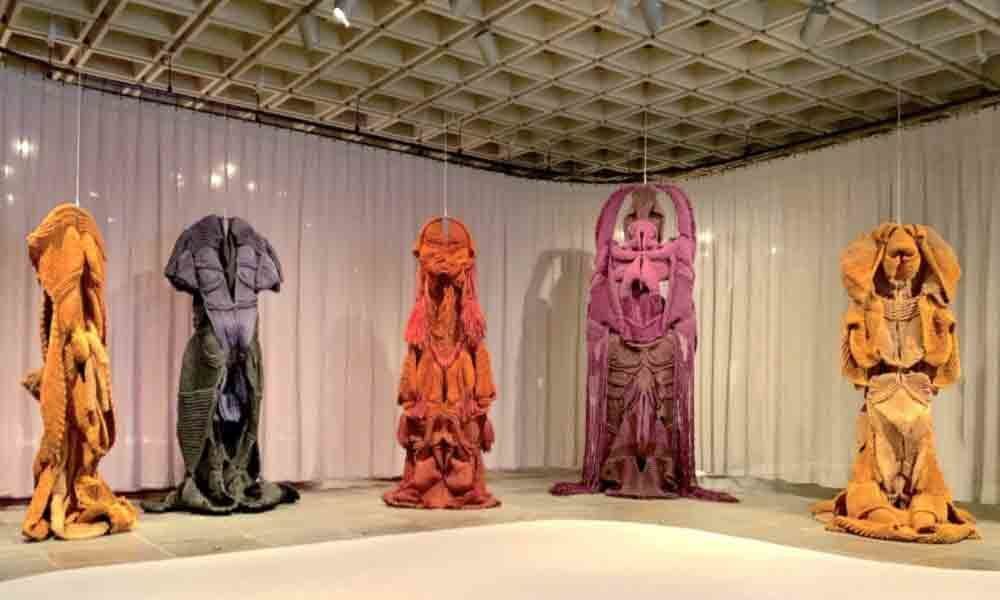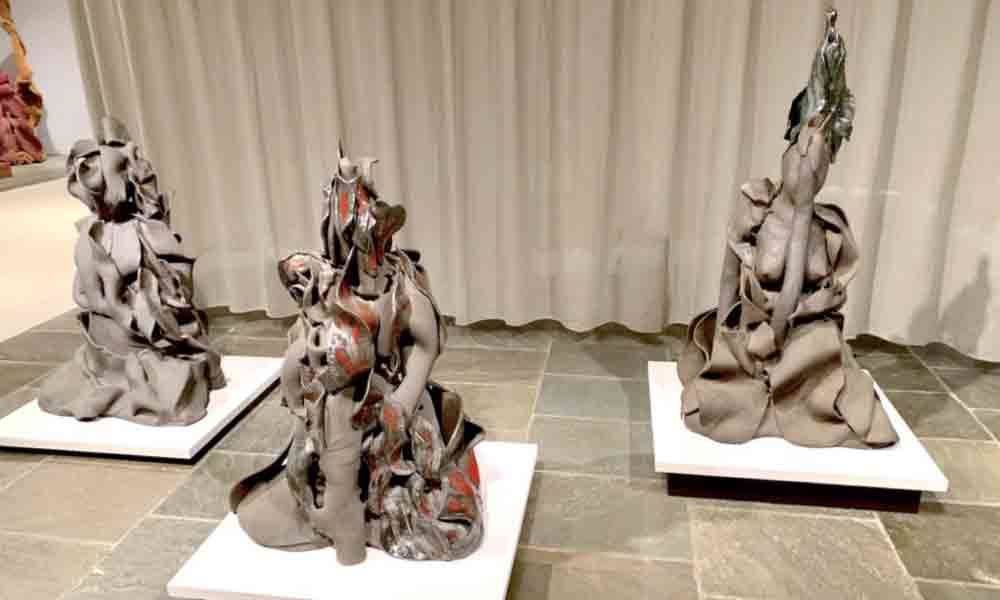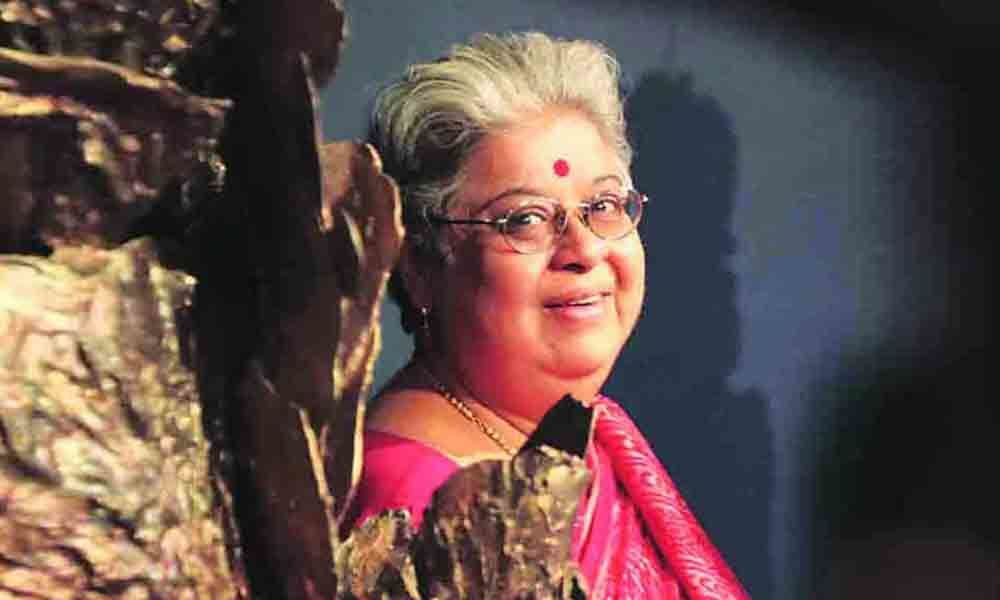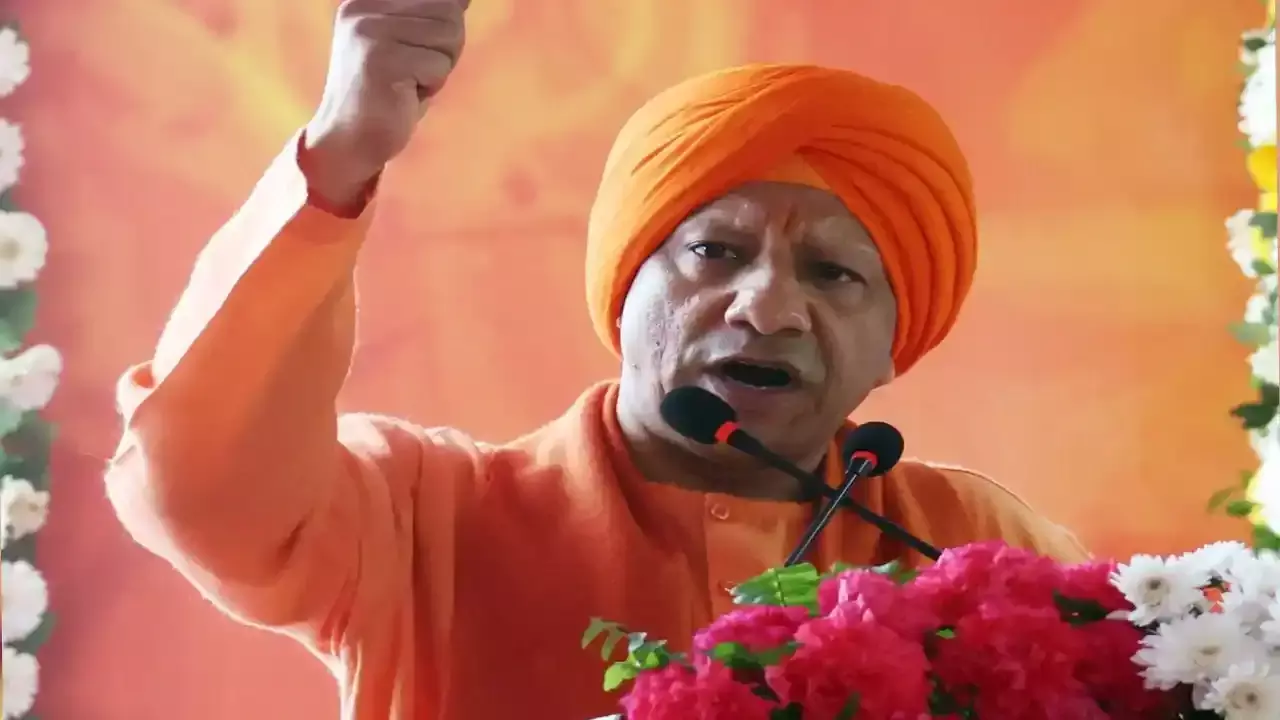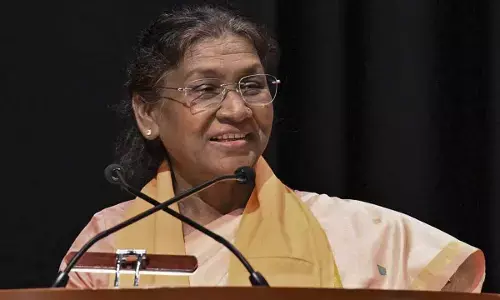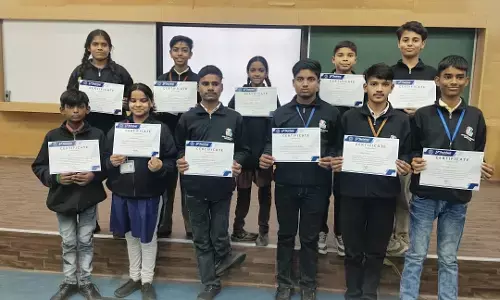Mrinalini Mukherjee draws awe at New York's Met
The exhibition brings together 60 pieces by Mukherjee and explores the artist's long-standing engagement with fibre.
At the Metropolitan Museum in New York, art lovers are walking in and devouring late Indian sculptor Mrinalini Mukherjee's retrospective 'Phenomenal Nature' with utmost relish. Curator Shanay Jhaveri, who has turned around the axis of aesthetic ardour with his inclusion of South Asian art practices, has breathed new life into the galleries at the Met Breur.
The exhibition brings together 60 pieces by Mukherjee and explores the artist's long-standing engagement with fibre along with her significant forays into ceramic and bronze from the middle and latter half of her career.
Mukherjee's towering coloured-form looms hang and sit like knotted sculptures. Carefully suspended from the ceiling, they look like mega woven monoliths that grow upwards from the ground. Riveting colours that remind us of handloom saris and woven dhurries and mats, each colour is not just distinctly anthropomorphic but figurative in an abstract yet voluptuous manner. The folds and cavities are fulsome with gently sensual suggestions, but each knotted sculptural work echoes the ethos of Indianesque splendour.
Mrinalini Mukherjee, the daughter of Benode Behari and Leela Mukherjee, began as a painter and joined a course for mural design at Baroda's MS University at the tender age of 16. With mentors like KG Subramanyan and J Swaminathan, she was soon into creating wall hangings and rugs with woven hemp.
Fast forward to 2019 at the Met. Her hemp sculptures create a choreography of tales from the past. Her titles reflect her deeper rumination of reading and experience that form her imagination and her residue of resonance.
In an interview in 2000, she had said: "My titles are born of my associations with mythic tales. They are not born of any religious practices. Yes, you learn to understand the rudiments of the ritual and absorb the nuances of the rural aesthetic. For me, mythology is not conventional, it is personal, according to what I respond to, my methods and materials too were born of that private and personal reflection. For me, the sacred did not belong to any specific culture or community, I looked upon it as a universal idiom, more as an expression that cuts through caste and creed."
Her titles are riveting in terms of the many associations that spring before our eyes – 'Basanti' (She of Spring) (1984), 'Yakshi' (Female Forest Deity) (1984), 'Pakshi' (Bird) (1985), 'Rudra' (Deity of Terror) (1982) and 'Devi' (Goddess) (1982).
The forest and its flora and fauna were as implicit in her creations as were the mythic legends. 'Woman on Peacock' (1991), 'Pushp' (Flower) and 'Van Raja II (King of the Forest)' (1991-94) are as fascinating in composition and the characteristics of corollaries.
Also, in the retrospective are Mukherjee's bronze and ceramic works, amongst which the 'Night Bloom' trio is a cornucopia of folds and bulbous dynamics. Indeed, you know instantly that she knew well the inner recesses of both abstraction as well as figuration. She wove into her sensibility the true essence of the natural and the artificial.
These sculptures thread the sojourn of both tradition and modernity and bring to the fore the indigenous intricacies of India's humble crafts and the age-old discussion on knowing design dictates that flit back and forth. If viewers can discern the sensual, then it is because the sensual is part of the iconography of Indianesque fervour.
On Instagram, 'Phenomenal Nature' is being celebrated as a once-in-a-life time journey and curator Jhaveri is walking though the portals of Mukherjee's show with a swagger and a smile.
The exhibition, made possible by Nita and Mukesh Ambani and the Reliance Foundation, marks the first comprehensive display of the artist's work in the US and will run till September 29.
- The writer is a senior art critic and independent curator who has beenwriting for over 30 years


